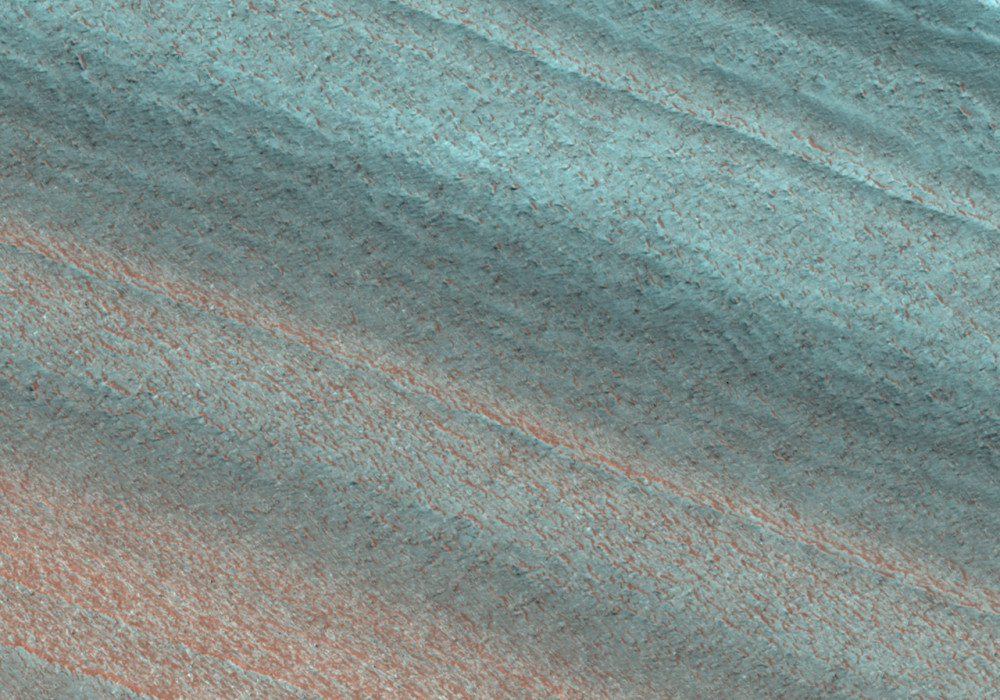This image shows an exposure of the north polar layered deposits (center). The layering visible here might have been formed by recent climate variations on Mars, similar to ice ages on Earth.
While the polar layered deposits are mostly water ice, exposures such as this are typically covered by a layer of red dust, protecting the underlying ice from evaporation during the summer. This dusty layer hides the internal composition of the polar layered deposits from view, but variations in the slopes of the surfaces of the layers are still visible.
The slope of each layer is probably affected by the internal composition, so the topography of exposures like this is of interest to scientists. When this image was taken (northern spring), the surface was mostly covered by seasonal carbon dioxide frost. This white frost layer helps to highlight the surface slopes because the visible brightness variations are mainly caused by topographic variations. Therefore, this image will be useful for photoclinometric, or “shape from shading” analyses that can yield topographic maps limited only by the resolution of the image.
Written by: Ken Herkenhoff (2 April 2008)
More info and image formats at http://hirise.lpl.arizona.edu/PSP_007493_2650
Image: NASA/JPL/University of Arizona
